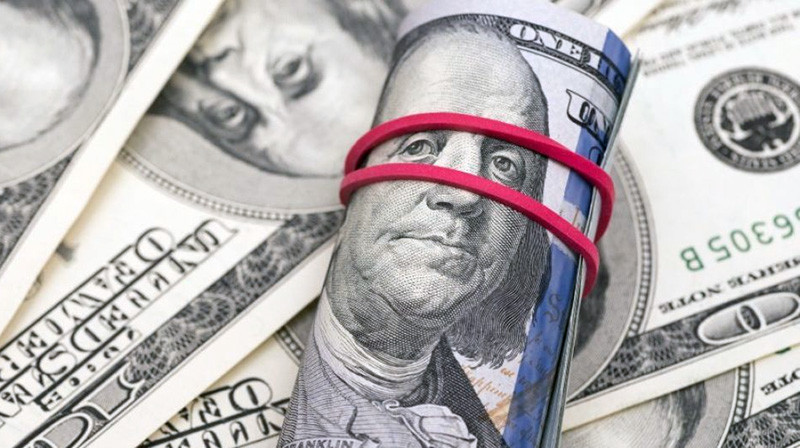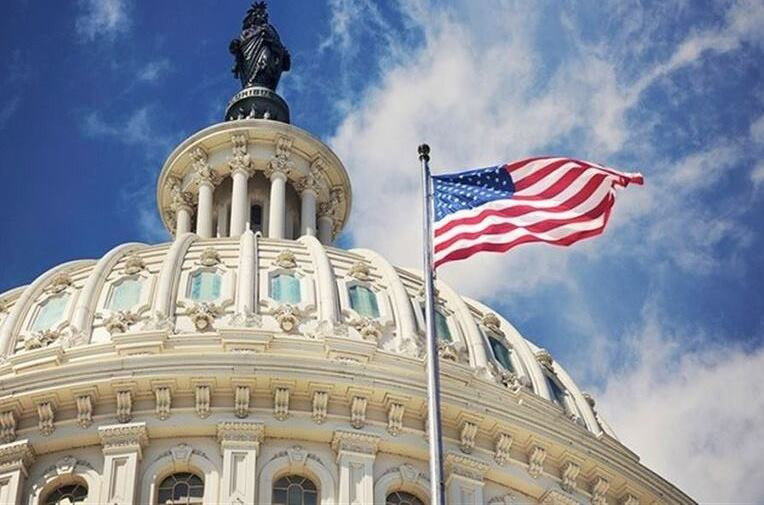

Since the beginning of the year, the greenback has gained about 15% in weight, but the political impasse in America can knock the wind out of its sails.
Preliminary results of the midterm elections held recently in the United States show that Republicans are approaching a majority in the House of Representatives, while control of the Senate hangs in the balance.
During the first two years of Joe Biden's presidency, Democrats controlled both houses of Congress, and the White House host could easily push through any spending bills.
However, now if the Republicans get a majority in the lower and upper chambers, the American administration will face great difficulties in carrying out its agenda.
As a result, a situation known as a "split government" may arise.
Historically, this has had negative consequences for the protective dollar and positive for risky assets, since the political impasse in Washington to some extent eliminates uncertainty for investors, because large-scale changes in US policy will be difficult.
"The deadlock scenario does eliminate some uncertainty. Recently, some trends related to budget spending and tax reforms have worried investors, especially in the context of inflation," said Edward Jones strategists.
"In a broader sense, it gives companies the opportunity to prepare, plan, make a budget, knowing that new legislation, regulations, tax reforms, etc. may not be adopted in this environment," they said.
In addition, a "divided government" is fraught with disputes over the US debt limit. There is currently a limit on how much a country can borrow to pay its bills. Failure to approve an increase in this limit threatens a state default.
This brings to us echoes of the events that preceded the chaos with the debt ceiling in 2011.
Recall that Republicans threatened to cancel the debt limit deal after winning the House of Representatives in November 2010, refusing to support it until President Barack Obama approved a number of spending cuts. It took the two sides until July 2011 to reach an agreement. By that time, the USD index had fallen by almost 9%.
"The dollar is still at risk due to the fact that the Democrats will lose at least one house of Congress. Republicans are threatening to resume a shootout with the White House, demanding spending cuts in exchange for raising the debt ceiling next year," DBS Bank analysts said.
"Spending cuts should help ease concerns about inflation, and together with the risk of a default on US debt, this will call into question the sustainability of the dollar's strength achieved this year," they added.

Although the Republicans' victory in one of the chambers of Congress and the subsequent impasse may create problems for further fiscal stimulus, as well as increase the likelihood of clashes between Republicans and Democrats over the timing of government funding and the US debt ceiling, these are issues for 2023, HSBC analysts say.
More relevant to the market is the question of whether any election results will be actively contested, which could raise potential concerns about whether the results of the presidential election in 2024 will be accepted, experts say.
Therefore, it is not surprising that on Wednesday the protective dollar interrupted a three-day series of declines.
Following the results of Wednesday's trading, the greenback strengthened against its main competitors, including the euro, by about 0.8%, finishing around 110.30 points.
Meanwhile, key Wall Street indicators declined sharply on Wednesday. In particular, the S&P 500 plunged by 2.08% to 3,748.57 points, offsetting about 65% of the profit received in the previous three days.
The fact is that the Republicans have not made the significant gains that the opinion polls suggested.
According to preliminary data, Republicans won 207 seats in the House of Representatives and 48 seats in the Senate against 184 seats for Democrats in the lower house and 48 seats in the upper.
To obtain a majority in the House of Representatives and the Senate, 51 seats and 218 seats are required, respectively.
While the struggle for control of the lower house remains too tense, control of the upper one is hanging by a thread: Georgia will hold a repeat election on December 6.
The reason for selling stocks could also be the desire of traders to reduce the volume of risky assets in portfolios ahead of the release of data on US inflation on Thursday.
The consensus forecast of experts surveyed recently by Bloomberg suggests a slowdown in October in the growth rate of overall inflation in the United States to 7.9% from 8.2% in annual terms, and the basic consumer price index to 6.5% from 6.6%.
Inflation data may influence the Fed's decision on the rate at the December meeting.
At the moment, the futures market for the federal funds rate estimates the probability of its increase next month by 50/75 bps in the ratio of 52% / 48%, respectively. This correlates well with investors' hopes for an early slowdown in the pace of rate hikes by the US central bank.
Recall that a week ago, the US central bank hinted at this in its accompanying statement following the results of the next meeting, although later Fed Chairman Jerome Powell upset the market with words that the peak level of rates may be higher than previously expected.
Now investors can expect another unexpected result. This year, analysts have consistently underestimated the real rate of inflation growth and overestimated them only once in July. If the latest figures turn out to be much higher than forecasts, this will put pressure on the US stock market and give a boost to the dollar.
"Up until yesterday, the stock market looked as if it was going to prepare for lower-than-expected US inflation data, which, in our opinion, was quite dangerous, given that five of the last six months have presented surprises in the direction of the CPI index growth," National Australia Bank analysts said.
"We think there is every chance that we will see a longer correction in risky assets if we really see an unexpected increase in inflation in the US. In this case, the market will be forced either to raise the Fed's final rate, or to include in the quotes the fact that rates will remain high for a longer period," they added.
Earlier, many strategists were quick to refer to the impeccable track record of the US stock market after the midterm elections.
According to Deutsche Bank, the S&P 500 index has shown growth for every 12-month period after the midterm vote since the Second World War.
But some experts warn against such expectations this time, given the uncertainty about how quickly the Fed will be able to curb inflation and stop its harmful tightening of monetary policy for the market.
Indeed, while the outcome of the election may remove some uncertainty, investors remain concerned about the stock's prospects.
"Next year's earnings estimates are still too high, the Fed's policy is still tight, and inflation is still too high," Abrdn analysts said.
Thus, even if we get better-than-expected figures for US inflation, the probability that they will cause only a short-term rebound in stocks is high. Soon after, the stock market may well turn around again.
Futures on major US stock indexes were trading flat on Thursday, reflecting cautious market sentiment.
Players refrain from being active in anticipation of the release of October data on the consumer price index in the United States.
The continuing tendency to avoid risks helps the dollar to maintain its position against its main competitors, including the euro.
Market participants are now considering the dollar's next movement after the Fed last week, on the one hand, reported a higher peak in US rates, and on the other – indicated a possible transition to a slower pace of increase in borrowing costs.
Some investors expect FOMC officials to be more cautious about tightening monetary policy, which will serve as a headwind for the greenback. At the same time, others expect that the US currency will maintain an upward momentum if the Fed intensifies an aggressive campaign to normalize policy.
Scotiabank analysts believe that the prospects for the dollar have become less rosy.
"Despite the current appreciation of the dollar, broader trends remain weak, and we still believe that the bullish cycle for the dollar has exhausted itself and that the US currency is prone to further weakening in the future," they said.
The greenback has retreated from multi-year highs in recent weeks as investors took profits after a months-long USD rally and as speculation grows that the Fed may be nearing closing the curtain on raising interest rates supporting the dollar.
"We all know that the greenback is likely to turn down at some point - the big question is when it will happen," Bank of Singapore analysts said.
"We believe that the recent pullback is consolidation, not the end of the dollar's uptrend, and that's because we think the Fed still hasn't finished fighting inflation unless the data really strengthens and pushes us into thinking that inflation is about to decline once and for all," they added.
In 2022, the US currency showed impressive results, reaching levels not seen in more than 20 years. Although the dollar's peak may come when the Fed eventually slows down its course of tightening monetary policy, this alone may not be enough to cause a significant depreciation of the USD, according to strategists at Principal Asset Management.
"In the past, it was also necessary to improve the prospects for global growth in order to lead to a reversal of the US currency. Thus, while the dollar's valuation remains stretched, the factors contributing to its strengthening remain in force. We expect that the growth of the USD exchange rate is likely to continue in 2023," they said.
Former Fed Chairman Alan Greenspan sees a tailwind for the dollar in 2023, even if the US central bank slows or stops raising interest rates.
"Even if, as some forecasters expect, inflation in the US reaches a peak in the first half of 2023, and the Fed slows down or even stops raising rates, the dollar will still have a tailwind that will support it," Greenspan said.
In his opinion, the greenback's growth should be facilitated by a steeper trajectory of monetary policy tightening by the Fed compared to other leading central banks in the world.
In addition, the Fed is actively reducing its balance sheet, and this factor may provide strong support to the dollar in the future, Greenspan believes.